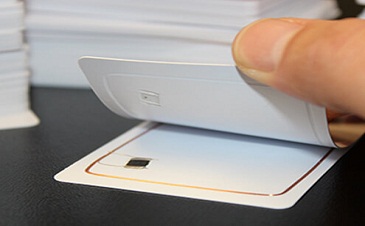So, you want to implement an RFID technology into your process or business? Do you know which technology you want to use? There are a few different options that are available. Do you know what they are? I will give you a few different types to think about before you implement. Each one has it’s pros and cons. It really does depend on your application, environment, etc… The first four technologies below will utilize a reader/antenna system. BLE (Bluetooth Low Energy) uses a wireless personal area network technology. So, for example, you can use a tablet or phone to pair using the Bluetooth technology you are currently familiar with when pairing to headphones, speakers, etc.. NFC (Near Field Communication) uses a technology based on the smartphone or tablet market. So, when you use Android Pay or other payment types using your phone, it will use the NFC technology.
LF (Low Frequency)
LF or Low Frequency uses the frequency ranges of 30 kHz to 300 kHz. Read ranges in this frequency will get about 1 foot. LF radio waves exhibit low signal attenuation. Its main use in North America is for aircraft beacon, navigation (LORAN), information, and weather systems. A number of time signal broadcasts are also broadcast in this band.
HF (High Frequency)
HF or High Frequency uses the frequency ranges of 3 MHz to 30 MHz. These are referred to as passive tags. This means that they are dormant until an antenna generates a signal which wakes up the tag to communicate. No battery, so cost is usually lower. The typical frequency used in the RFID market using this technology is 13.56 MHz. These HF tags typically have a good amount of memory and come in all sorts of different sizes and shapes. These tags are good for applications where read distances are close, a maximum of ~1.5 meters. The other positive factor for this is the frequency range and technology are recognized globally. This makes it a heavy choice when you are dealing with products internationally and don’t want to worry about different frequency ranges depending on which country you are working with.
UHF (Ultra High Frequency)
UHF or Ultra High Frequency uses the frequency ranges of 865 MHz to 928 MHz. These are referred to as passive tags. This means that they are dormant until an antenna generates a signal which wakes up the tag to communicate. No battery, so cost is usually lower. The typical frequency for Europe would be 868 MHz and for the US it would be 915 MHz. Using this frequency range will give you longer read distances, if that is what you are looking for. Gen 2 will get you a maximum of ~12 meters. This range seems to be the most popular, which drives the cost down. Again, all sorts of shapes and sizes can be available.
Some target markets would be:
low power requirements, operating for “months or years” on a button cell
small size and low cost
compatibility with a large installed base of mobile phones, tablets and computers
NFC (Near Field Communication)
NFC or Near Field Communication typically uses a smartphone or tablet that has NFC capabilities. Read ranges are typically ~1.6 inches or closer. NFC devices are used in contactless payment systems, similar to those used in credit cards and electronic ticket smartcards and allow mobile payment to replace/supplement these systems. This is sometimes referred to as NFC/CTLS (Contactless) or CTLS NFC. NFC is used for social networking, for sharing contacts, photos, videos or files. NFC-enabled devices can act as electronic identity documents and keycards. NFC offers a low-speed connection with simple setup that can be used to bootstrap more capable wireless connections
These are just a few things to consider when thinking about implementing a new technology into your current application/environment. We get many inquiries regarding this exact topic. Which technology would be best for me? The answer to this question will differ from each and every application. A proper study and review of your current processes and how you would like to see the process once you implement an RFID/NFC/BLE technology. If you have further questions, please do not hesitate to use our Contact Us page and we will respond to your application specifically!

